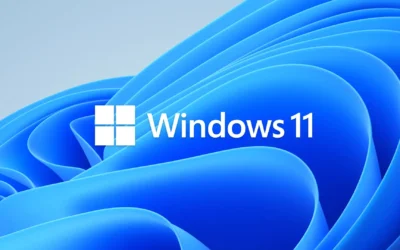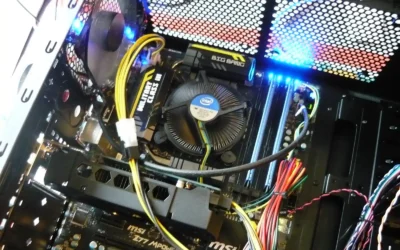Although sometimes it feels like chasing shadows, improving your PC’s performance might be one of the most powerful changes you can make. Install RAM appropriately first. This not only improves your system’s speed but also makes up to 50% of performance enhancement possible. In this guide, I will go over how to install memory correctly and boost your PC performance up to 50%, optimizing your workstation’s potential.
Why Installing Memory Correctly is Vital
Memory installation can either ruin or improve the performance of your PC. Know how to properly install and configure your RAM, whether your workstation is HP Z440, Lenovo ThinkStation, Dell Precision, or another. This article will lead you through the details so you may get up to a 50% performance increase.
Watch My YouTube Video on Installing Memory
Understanding Memory Channels
The performance of your PC depends critically on memory channels. Knowing how memory channels operate will greatly affect the speed and efficiency of your system regardless of your level of technological knowledge or building expertise. The principles of single, dual, and quad channels will be broken out in this part, explaining why they are important for your workstation. Understanding these ideas will help you make wise selections that guarantee the optimal operation of your PC.
Single, Dual, and Quad Channels Explained
Memory channels can be confusing, but they are crucial to understand for optimal performance. A single channel uses one memory stick, while dual channels use two, and quad channels use four. The more channels you use correctly, the better your performance will be.
Why Channels Matter
Using the correct number of memory channels can drastically improve performance, especially in memory-intensive tasks like video rendering. Missing out on channels can reduce performance by up to 50%.
Matching Memory Modules
Always use identical memory modules in terms of size and speed within your desktop PC or workstation to avoid unbalanced configurations that can hurt performance. For instance, mixing a 4GB module with an 8GB module can lead to inefficiencies.
Correct Memory Installation
Installing memory correctly is more than just plugging in modules; it’s about strategic placement to unlock your system’s full power. Incorrect installation can lead to underwhelming performance, even on high-end machines. Here, we’ll guide you through the essential steps of proper memory installation, tailored to various workstation models like HP Z440s and Lenovo S30s. Follow our detailed instructions to avoid common pitfalls and ensure your memory setup is optimized for maximum efficiency.
Step-by-Step Guide
Here’s how to ensure you’re installing your memory correctly:
- Check Your System: Look up your motherboard’s specifications to understand its memory slots and channels.
- Install Evenly: Install one memory module in each channel to balance the load. For a quad-channel system, this means four modules.
- Use CPU-Z: Download and use CPU-Z, open the program, and click on the “Memory” tab to check if your system is recognizing all the memory correctly. It will list your configuration as single, dual, triple, or quad channel.
HP Z440 Example
In an HP Z440, you should install memory in the dark slots first starting with DIMM1. This ensures you are filling one slot in each channel for optimal performance.
Lenovo and Dell Systems
For Lenovo S20s and S30s, Dell Precisions, and other workstations and desktop pcs follow similar guidelines. Each system may have slight variations, so always refer to the manufacturer’s instructions so you install at least one memory module in each channel.
Testing Your Configuration
Once you’ve installed your memory, testing your configuration is crucial to verify that everything is working as it should. Without proper testing, you might miss out on potential performance gains. This section will introduce you to useful tools like CPU-Z and explain how to interpret their results. By the end of this guide, you’ll be able to confidently assess whether your memory setup is correctly configured and performing at its best.
Using CPU-Z
Once your memory is installed, verify your setup with CPU-Z. Navigate to the memory tab to see if your system is running in single, dual, triple, or quad-channel mode.
Common Mistakes to Avoid
Avoid installing mismatched memory modules or filling only part of the channels. Both can lead to suboptimal performance and frustrate your efforts to boost your PC’s speed.
Optimizing for Budget Builds
Constructing a high-performance PC does not have to be expensive. Using the correct strategy will help you accomplish amazing results even on a limited budget. This part centers on ways to maximize performance without going overboard. We will discuss advice on choosing reasonably priced memory modules and provide ideas on how to schedule your upgrades. Find out how to maximize your money’s worth while guaranteeing the effective and seamless operation of your system.
Maximizing Bang for Your Buck
Budget builds don’t have to mean poor performance. By correctly installing memory, you can get excellent performance without breaking the bank.
Upgrade Pathways
Start with the right base configuration. For example, four 4GB modules provide a balanced setup. As your budget allows, upgrade by adding more identical modules.
Recommended Budget Workstations
Consider systems like the Dell Precision 3810 or Lenovo S20, which offer solid performance with proper memory configuration at a lower cost.
Common Issues and Fixes
Even with careful planning and installation, you might encounter issues with your memory setup. These problems can hinder your PC’s performance, from single-channel bottlenecks to unbalanced configurations. This section highlights users’ most common issues and provides practical solutions to fix them. By understanding these challenges and how to address them, you can maintain optimal performance and prevent frustration.
Single Channel Bottleneck
Installing only one memory module can bottleneck your system. Always aim to use at least dual channels for better performance.
Unbalanced Memory
Mixing different sizes or speeds can create an unbalanced system, leading to inefficiencies. Stick to identical modules for optimal results.
Incorrect Slot Usage
Refer to your motherboard’s manual to ensure you’re using the correct slots. Incorrect placement can negate the benefits of multi-channel memory.
Real-World Examples
Theoretical knowledge is essential, but seeing how memory installation and optimization work in real-world scenarios can be incredibly valuable. This section will share case studies and examples from various workstation builds. Learn from real experiences with systems like the HP Z440 and Dell Precision 5810, and see how proper memory configuration transformed their performance. These examples will give you practical insights and inspire confidence as you work on your own setup.
HP Z440 Setup
In one HP Z440 build, installing four 4GB modules in the correct slots boosted video rendering performance by 50%, highlighting the importance of proper configuration.
Lenovo S30 Upgrade
Upgrading a Lenovo S30 from single-channel to quad-channel memory significantly improved multitasking and application load times.
Dell Precision 3810 Performance
Filling all memory slots in a Dell Precision 3810 resulted in smoother performance and faster processing times for complex tasks.

PC4 Desktop Memory Module
Inspirational Story
My Journey with Memory Upgrades – Alex K.
Like many techies, I began with a simple arrangement. My initial workstation was a second-hand HP Z 440. Though something was lacking, the machine was solid. Though it had promise, it wasn’t providing the performance I required for 3D rendering and video editing.
After some investigation, I came to see that the memory setting was the problem. One 8GB memory module was supplied with the machine. I had no idea, though, that this was undermining my whole strategy. Seeking to maximize my Z440, I explored the realm of memory upgrades.
First, I realized the value of memory channels. I discovered that I had to use all four of the channels built into my motherboard if I was to get the optimum performance. This meant I had to purchase three extra 8GB modules, making sure they were exactly alike to prevent any compatibility problems.
The Memory Installation Process
First, the procedure seemed somewhat intimidating. I had to open my PC, negotiate the components, and gently install every module. Still, the effects were instantaneous and remarkable. Previously taking minutes, chores now took seconds. My workstation seemed to be brand-new.
This encounter gave me a great lesson: sometimes, the tiniest adjustments can have the most impact. I started supporting correct memory installation so that friends and coworkers may maximize their PCs. Once a slow beast, my Z 440 had become a powerhouse with just a basic memory increase.
If I were to do it all over again, I would focus more on the initial setup to guarantee every component was first installed correctly. Still, I appreciate the trip and the knowledge I acquired. I advise anyone dealing with similar problems not to undervalue the influence of appropriate memory configuration. It changes the rules of play.

Computer Ram Memory for a Workstation PC
Do’s and Don’ts
Do’s
- Do use identical memory modules.
- Do fill all available memory channels for optimal performance.
- Do check your system’s manual for correct slot usage.
- Do use tools like CPU-Z to verify your setup.
- Do plan your memory upgrades according to future needs.
Don’ts
- Don’t mix different sizes or speeds of memory modules.
- Don’t ignore manufacturer guidelines for installation.
- Don’t install memory in random slots without checking the manual.
- Don’t forget to test your configuration for optimal performance.
- Don’t underestimate the impact of proper memory setup.
Frequently Asked Questions
Knowing and maximizing your PC’s memory can be difficult; hence, you may have various doubts regarding the procedure. These parts answer the most often-asked questions about memory installation and performance. We have you covered whether your questions center on best practices, troubleshooting, or compatibility. Dive in to get simple, succinct responses to enable you to maximize your system and make wise judgments.
Why is my PC slow despite having high-end specs?
Improper memory installation can bottleneck performance. Ensure you have installed memory in all available channels for optimal speed.
Can I mix different sizes of memory modules?
It’s best to use identical modules. Mixing sizes can lead to an unbalanced system and reduced performance.
What is CPU-Z and why should I use it?
CPU-Z is a tool that helps you verify your memory configuration, ensuring your system is running in the correct mode (single, dual, or quad-channel).
How much memory do I need for video rendering?
For video rendering, at least 16GB is recommended, but 32GB or more can significantly improve performance.
Can I install memory myself, or should I hire a professional?
Installing memory is a straightforward process if you follow the guidelines. However, if you’re unsure, consulting a professional might be beneficial.
Final Thoughts
Optimizing your PC’s memory setup is crucial for maximizing performance. You can significantly enhance your workstation’s speed and efficiency by ensuring each memory slot is correctly filled and using identical modules. Remember to plan for future upgrades and use tools like CPU-Z to verify your configuration.
- Verify your system’s memory channels and slots.
- Install identical memory modules in each channel.
- Use CPU-Z to check your setup.
- Plan for future memory upgrades.
- Avoid mixing different sizes or speeds of modules.
Authority Links
For more in-depth information on memory installation and PC performance optimization, check out these valuable resources:
How to Install RAM in Your PC – Tom’s Hardware provides a comprehensive guide on installing RAM, complete with step-by-step instructions and visuals to help you through the process.
How to Install RAM – Crucial offers detailed guidance on how to install memory modules correctly, including tips on ensuring compatibility and avoiding common mistakes.
How to Install RAM in a PC – Sweetwater shares expert advice on RAM installation.







